Above: Seagrass beds and scarring in the Florida Keys off Islamorada. Credit: Ian Segebarth for HuffPost
BISCAYNE BAY, ISLAMORADA AND SARASOTA BAY, Florida — It’s winter in Miami. Many New Englanders come here to escape the snow, although none opt for snorkeling on this windy January morning. We pull off the side of the highway with specific instructions about where to find a particular species of seagrass from Laura Eldredge, manager of the Biscayne Bay Aquatic Preserves.
After slipping into wetsuits, we jump in a kayak and paddle into Tuttle Basin, which is lined by highways and high-rise buildings. More than 6 million people live here in the Miami metropolitan area, the most densely populated part of Florida.
We’re searching for a tiny patch of Johnson’s seagrass (Halophila johnsonii) in the shallow, tea-colored water. Despite Eldredge’s precise directions, we can’t find it. The leaves only grow to one inch long and boat traffic is stirring up the bay’s fine sediments. We can barely see our own hands under the surface — the turbid water makes it both difficult to snorkel and hard for the seagrass to photosynthesize and grow.
This elusive, tiny marine plant is at risk, threatened by human activities such as dredging, scarring from boat propellers and pollution from coastal development. It is the first and only marine plant to be listed under the Endangered Species Act, where it’s classified as “threatened.” It may have the most limited distribution of any seagrass on Earth, found only in lagoons along 125 miles of Florida’s southeast coast.
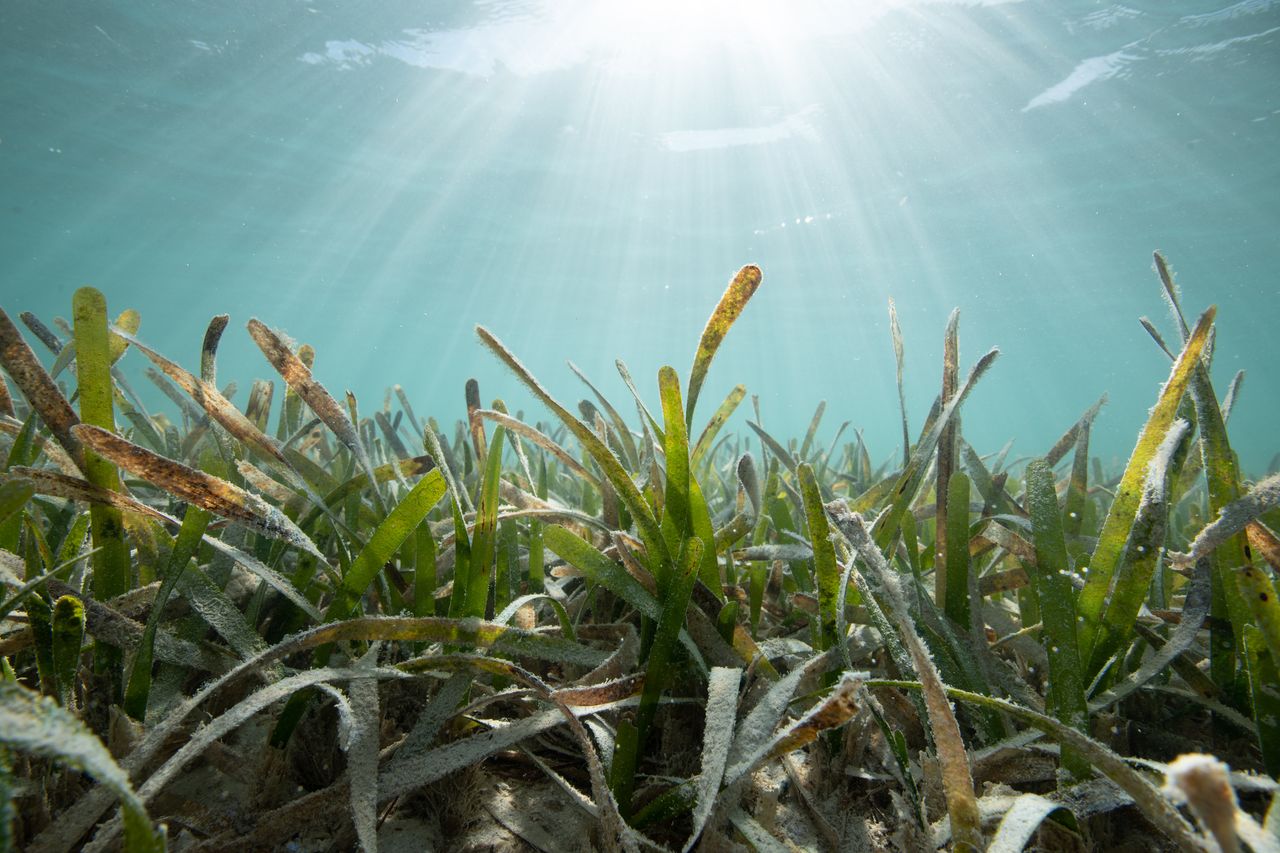
Florida has the most diverse seagrass meadows in the U.S. The state is home to 2.5 million acres of seagrasses, made up of seven different species.
Around the world, 58 species of seagrasses hug the coastline of every continent except Antarctica. These underwater flowering plants — more closely related to lilies than grasses — are often overlooked and underappreciated, but these “hidden forests” have an outsized impact when it comes to tackling climate change and supporting other marine ecosystems.
Seagrasses occupy less than 0.2% of the seafloor but represent up to 10% of the ocean’s capacity to store carbon, known as “blue carbon.” Although the amount they can store depends on the species and location, some seagrasses can store twice as much carbon as the world’s temperate and tropical forests. They also help keep the water clear by capturing sediments. They cycle nutrients and provide important habitats for fish, crustaceans and shellfish.
But these underwater meadows are among the most threatened ecosystems on Earth ― at risk from climate change, coastal development and nutrient pollution, such as phosphorus and nitrogen, which enter the ocean from wastewater treatment plants, stormwater, agriculture and other sources. These pollutants cause phytoplankton and algae to grow more rapidly, reducing water clarity and making it harder for seagrasses to get enough light to photosynthesize.
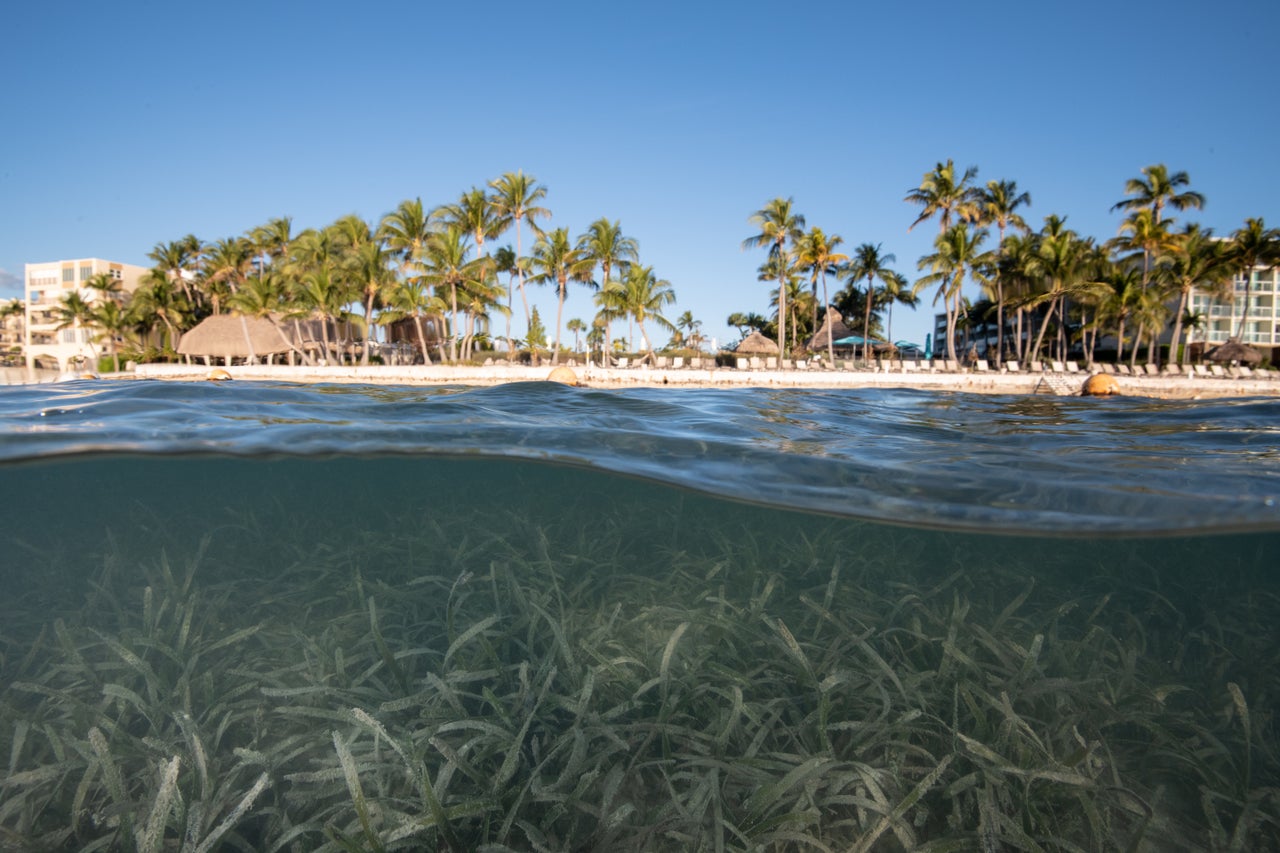
Normally, healthy seagrass meadows are self-reinforcing, meaning they help create conditions that make it more favorable for them to survive. They capture sediments, which makes the water more clear, they oxygenate the water, and they share nutrients and carbohydrates with other seagrasses through root systems that connect the plants underground.
“If you get a stress to the system, you start to erode its resilience,” said Savanna Barry, who has been studying seagrasses in Florida for more than 10 years and works at the UF/IFAS Nature Coast Biological Station. “When our human systems push those buttons too often, then the seagrasses start to thin out and die.” As the seagrass dies, the sediment once trapped by its roots clouds the water and blocks light.
Worldwide, 10 seagrass species are at elevated risk of extinction and three qualify as endangered. Between 1980 and 2006, seagrass habitat globally disappeared at a rate of about 42 square miles per year, five times faster than the rate of loss during the previous 40 years.
The die-off of seagrasses presents a huge threat to the ocean ecosystem as well as to fisheries, tourism and jobs that depend on the seas.
“There definitely are true tipping points in seagrass meadows where you really can push it too far and get yourself in a situation where it’s really hard for the seagrass to come back,” said Barry.
It’s not that the changes are necessarily irreversible in themselves, she explained, “it’s just that it takes millions, if not billions, of dollars and decades to do it. Once you lose seagrass, you’re in for an extensive and long-term battle to get it back.”
Above: A boat leaves a resort dock on Islamorada, leaving a scar and a cloud of silt. Credit: Ian Segebarth for HuffPost
Dave Tomasko has studied seagrasses in Florida for almost 40 years and is now the director of the nonprofit Sarasota Bay Estuary Program, which helps protect and restore the bay off the central west coast of Florida.
“Our general approach to managing seagrasses is managing water quality,” he said, so seagrasses can get the abundant light they rely on for photosynthesis. The key to this, said Tomasko, is reducing the amount of nutrients being washed into the bay from stormwater and wastewater.
The Sarasota Bay Estuary Program collaborates with the local government, the Florida Department of Environmental Protection, and the water management districts to upgrade wastewater treatment plants and add stormwater retrofits, such as retention ponds, rain gardens and green roofs, which slow down polluted stormwater and let it seep into the ground naturally, rather than running directly into streams, lakes and oceans.
But Sarasota Bay is what Tomasko calls “a success story sliding backwards.”
“Between 1988 and 2014,” he said, “we had a big nutrient reduction and seagrass coverage actually increased to levels above what it was in 1950.” During those years, Sarasota County consolidated around 70 smaller wastewater treatment plants, many of which were struggling to operate, into a series of larger plants. This, combined with the removal of thousands of septic tanks and banning fertilizer use on lawns during the rainy season, significantly reduced the amount of nitrogen entering the bay.
Unfortunately, a lot of this progress was undone between 2013 and 2018. During these five years, a wastewater treatment plant in Sarasota County released more than 800 million gallons of sewage that were not properly treated, which severely increased nutrient loads in the bay. At the same time, there was increased rainfall as well as population growth in the area, which stressed aging infrastructure with more waste to treat, store and dispose of.
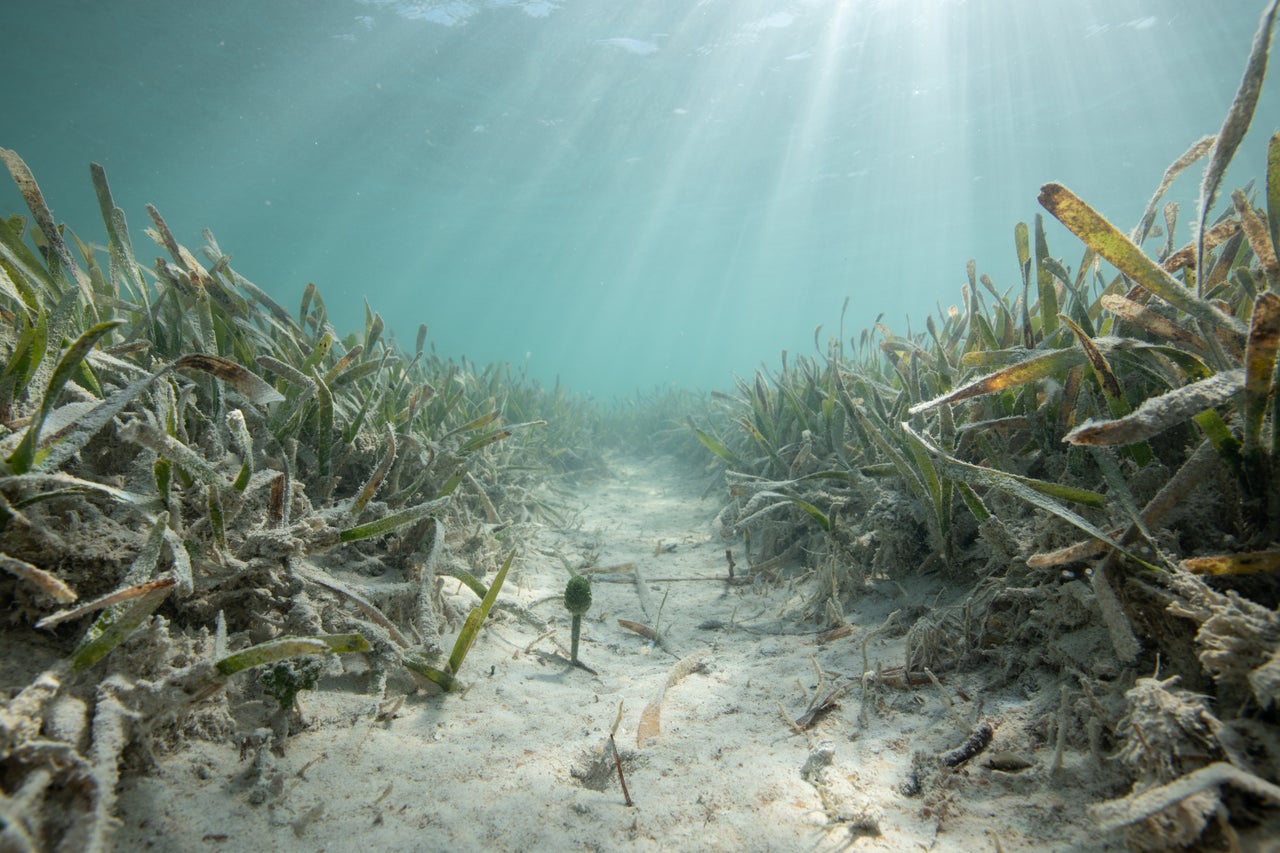
In the southern part of Sarasota Bay, Tomasko said most of the increase in seagrass coverage is now gone.
As coastal development continues, Floridians often don’t think about their impacts on the hidden meadows beneath the sea’s surface. “We build bridges, we have tall buildings and beautiful apartments,” said Tomasko, “but we haven’t maintained a wastewater infrastructure commensurate with the population requirements.”
Even in regions that are currently less populated, seagrasses are still at risk. As climate refugees are predicted to move from south to north Florida to escape rising seas, more remote areas are going to have to contend with an increasing population, which brings issues with wastewater, stormwater runoff, and fertilized lawns that have historically plagued more developed parts of the state.
Barry, who’s based in Cedar Key in Florida’s Big Bend region, a few hours north of Sarasota, is worried. “We’re not out of the woods just because we’re less developed,” she said. “Every bad decision that’s made along the way in terms of nutrient management ... seagrasses are going to be the end receiver.”
Even without large populations on the coast, seagrasses are downstream of rivers that pass through agricultural fields and developments and carry these nutrients out to the ocean.
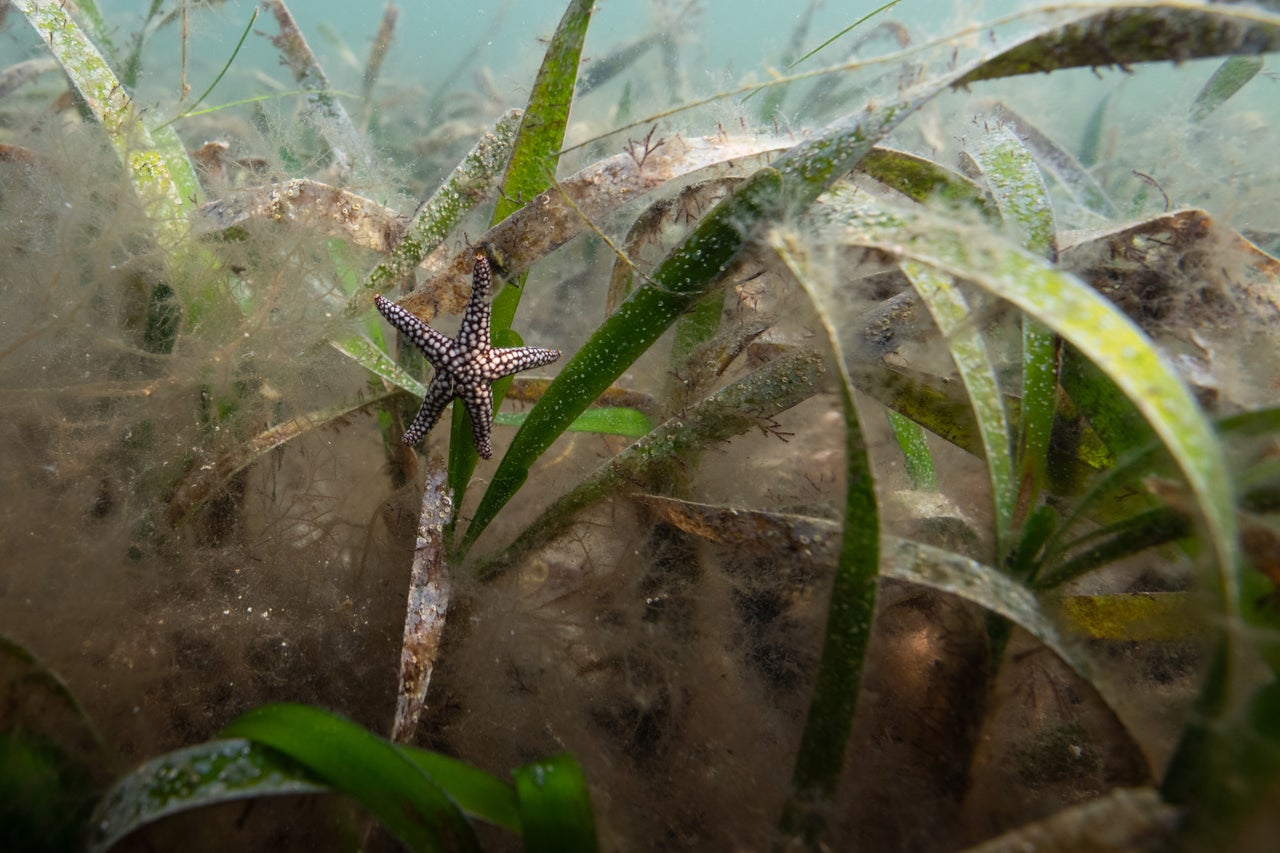
The Big Bend area is home to the second-largest seagrass bed in North America. In order to help protect these vulnerable areas of seagrass, Florida passed a bill to create the Nature Coast Aquatic Preserve — the state’s first aquatic preserve in more than 30 years. Gov. Ron DeSantis (R) signed the bill into law in June 2020. The preserve will have a management plan and state managers who will oversee and protect 400,000 acres of seagrass meadows, spanning about 800 square miles off Florida’s west coast.
This region is known for manatee-watching, scalloping and fishing, all of which rely on seagrasses to survive. Seagrass-dependent activities generate approximately $600 million for the tricounty region (Citrus, Hernando and Pasco counties) annually, provide more than 10,000 jobs, and support more than 500 businesses, according to The Pew Charitable Trusts.
More than 100 businesses, nine state and national recreational fishing and marine industry organizations, the Citrus and Hernando county commissions, and The Pew Charitable Trusts backed creation of the preserve.
“The Nature Coast Aquatic Preserve is a win for the economy and environment that will safeguard valuable marine resources and support fishing, scalloping, and tourism businesses for generations to come,” said Holly Binns, director of The Pew Charitable Trusts’ ocean and coastal conservation work in the Southeast.
Binns adds that the need for water quality protections in Florida is growing more urgent with increasing nutrient pollution. Recently, red tides and other harmful algae blooms on both coasts, fueled by nutrient-laden runoff, have taken a severe toll on fishing and tourism businesses.
Above: Heavy scarring in the seagrass beds of Biscayne Bay. Credit: Ian Segebarth for HuffPost
One of the most-cited seagrass success stories is Tampa Bay. Between 1950 and the 1980s, the bay lost 46% of its seagrasses. But since the late 1980s, the Tampa Bay area has reduced the amount of nitrogen entering the bay by 90% and more seagrass currently exists than at its peak in 1950. Seagrasses now cover 40,000 acres, almost three times the area of Manhattan.
Starting in the 1980s, stricter legal standards were applied to wastewater treatment plants in the Tampa Bay area and St. Petersburg started a large-scale reclaimed wastewater program, which uses treated wastewater on lawns and golf courses. During the same decade, the Florida Department of Environmental Protection developed more stringent requirements for stormwater systems, which reduced the amount of nutrients and sediments flowing into the bay from urban areas.
While Tampa shows the value and potential of seagrass restoration, the struggles to halt seagrass decline in areas like Sarasota Bay and Biscayne Bay reveal just how hard it is to bring back these vital ecosystems once they’ve been lost.
Between 2016 and 2018, scientists from the University of South Florida and the Florida Fish and Wildlife Conservation Commission visited 33 seagrass restoration sites around the state, some of which were more than three decades old. They found that almost 90% of the sites continued to support seagrass but when compared with natural seagrass beds, these restored beds were more sparse, with an average of one-third less coverage of seagrass.
Protecting seagrasses in the first place is a much better strategy and this requires buy-in from everyone: community residents, government, businesses that rely on the water and businesses that contribute to water pollution.
Increasing awareness of the importance of seagrass ecosystems is one of the greatest challenges for its conservation. Seagrasses suffer from not being as well-known or appreciated as their more charismatic marine cousins, such as coral reefs and mangroves, despite being just as threatened.
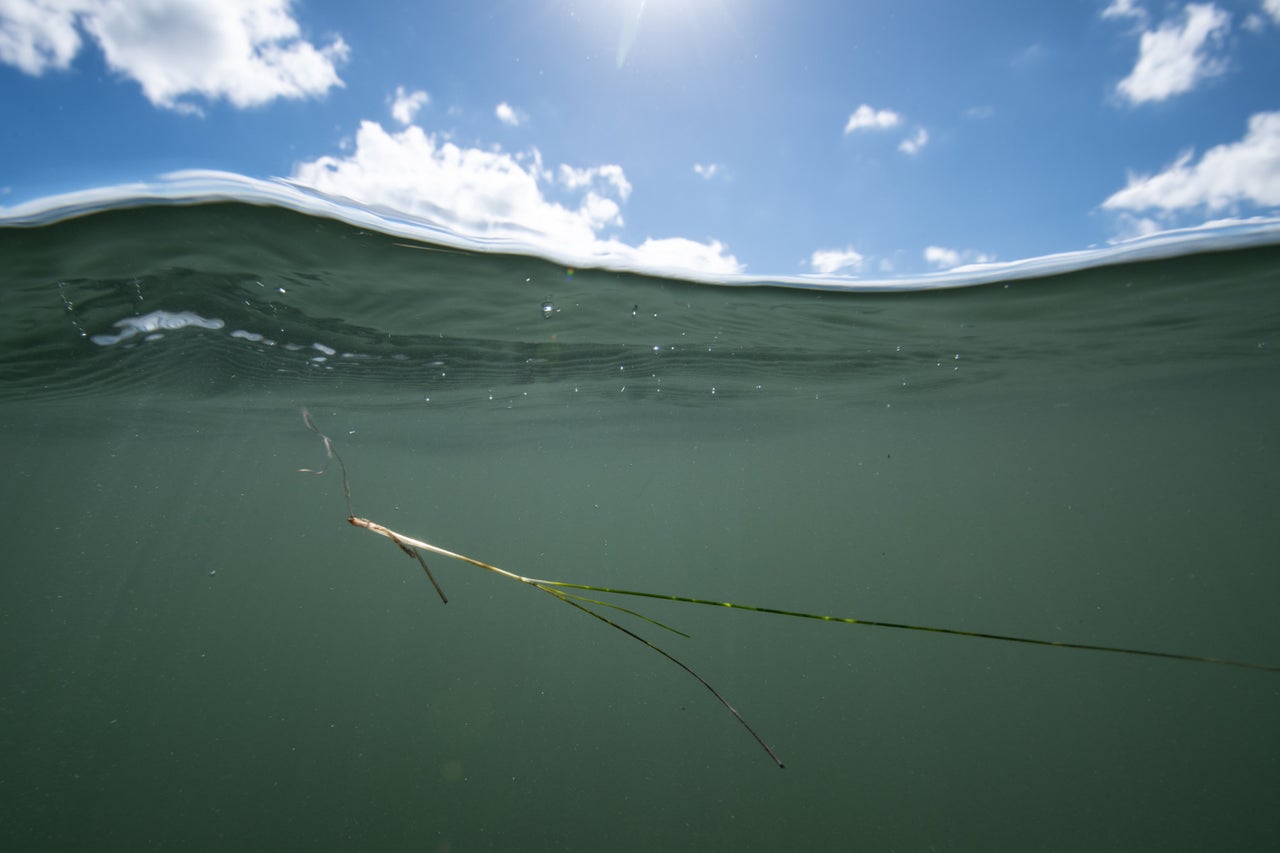
There is some hope that citizen science projects can help increase this awareness. The Sarasota Bay Estuary Foundation coordinates citizen science efforts to monitor the seagrass. Tomasko said these volunteers can help fill crucial data gaps in the organization’s monitoring and restoration projects.
The foundation also has a board of more than 50 local stakeholders that Tomasko oversees for the Sarasota Bay Estuary. It includes residents, scientists, managers, and members of local and state government. “It’s not just scientists and engineers but policymakers — we have the heads of utilities; we have elected officials. We have to bring them into it. Otherwise, we’re just talking amongst ourselves.”
Florida’s seagrass meadows need to become something that Floridians know are disappearing and want to protect. “People seem to generally know the [sea]grass is probably important,” said Barry, “but they really can’t name any reason above that fish live there. There’s not a general understanding of what seagrasses are doing for us more broadly or that decline in water quality is their main threat. There’s definitely no one opposed to seagrass but there are also not a lot of advocates for it.”
Of course, it’s not just Florida where seagrasses need protection. Globally, hundreds of millions of people directly rely on seagrass for their food and livelihood but worldwide loss of seagrasses is estimated at 2% to 5% per year — 4 to 10 times the rate of loss for tropical forests. “Public awareness of these losses, as well as understanding of the processes and causes of loss,” wrote marine ecologist Carlos Duarte and colleagues in a 2008 article in Estuarine and Coastal Sciences, “is necessary to motivate effective management and protect or restore these ecosystems.”
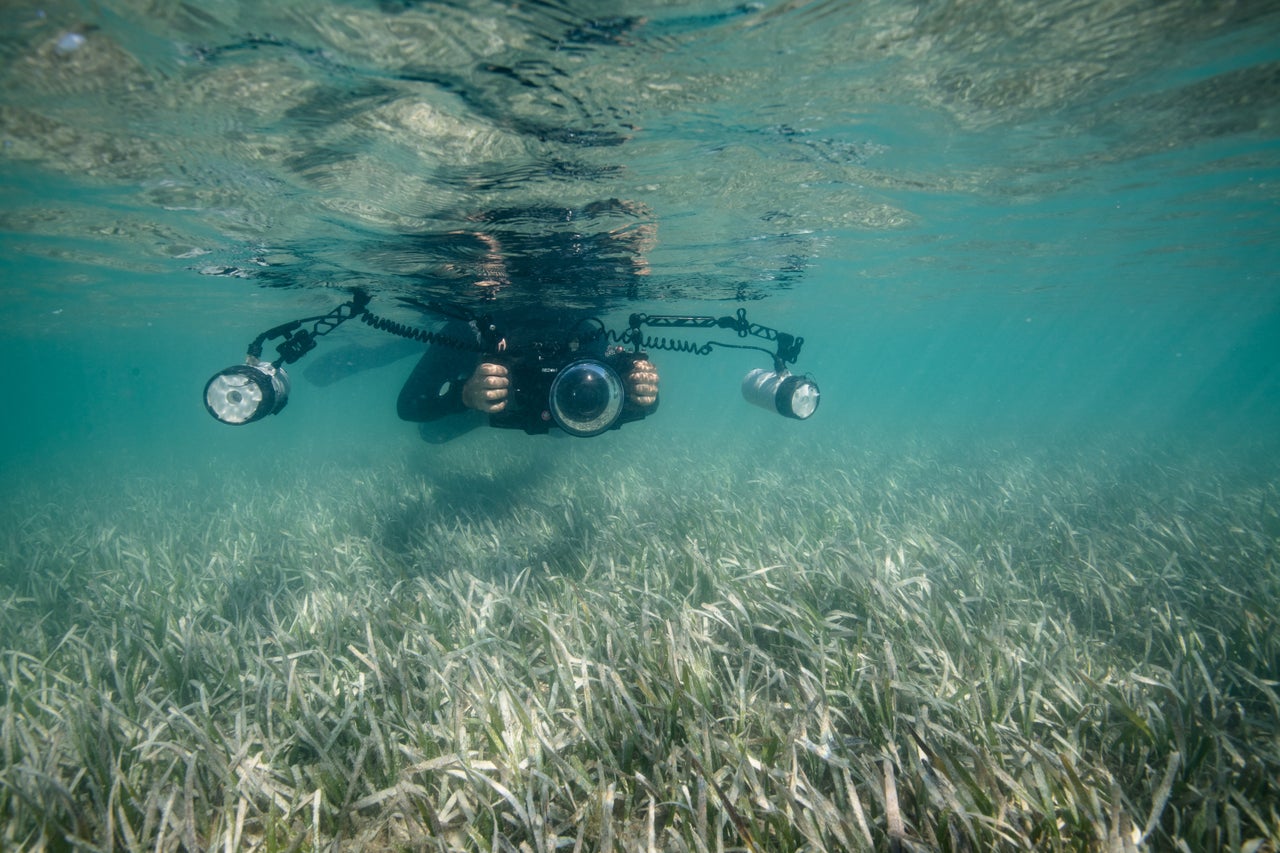
Back in Miami’s Tuttle Basin, we paddled the kayak upwind toward the boat ramp, discouraged about not finding the Johnson’s seagrass. Jet Skis zoomed around and power boats blaring bass-heavy music practically swamped us with their wakes. A female manatee and her calf surfaced to breathe near the kayak, but when I carefully slid into the water to photograph them swimming in the seagrass beds, the water was too dark to see them clearly, even from a foot away. To see the seagrasses that were there — turtle grass, manatee grass and shoal grass — I had to dive close enough for it to touch my mask.
From above, the view is equally disheartening. Scars from boats crisscross the seagrasses like sand drawings with a stick at the beach. These scars rarely heal, especially in popular boating areas — for some seagrasses, it’s estimated it could take 60 years for them to heal. In places like Biscayne Bay, which has lost more than 21 square miles of seagrass over the past decade, this is time they may not have.
Additional travel support for this story was provided by the “Save Wild Florida” specialty license plate.
HuffPost’s “Work In Progress” series focuses on the impact of business on society and the environment and is funded by Porticus. It is part of the “This New World” series. All content is editorially independent, with no influence or input from Porticus. If you have an idea or tip for the editorial series, send an email to thisnewworld@huffpost.com.